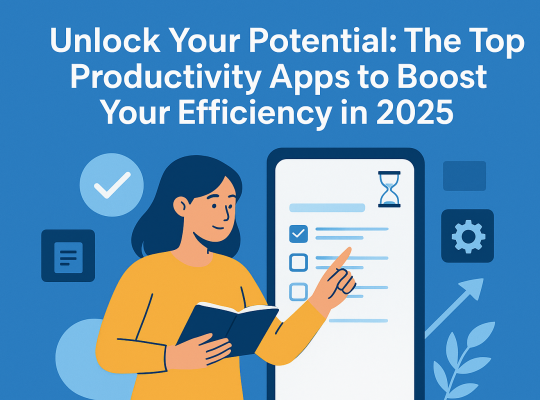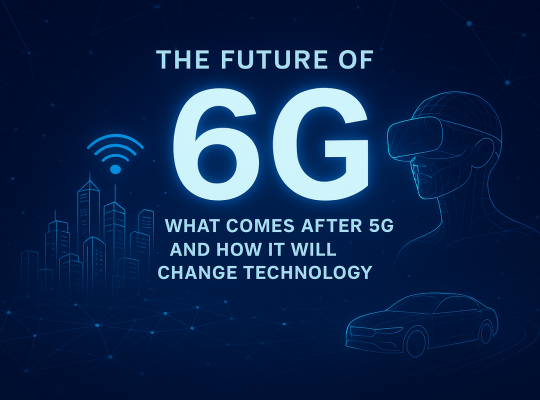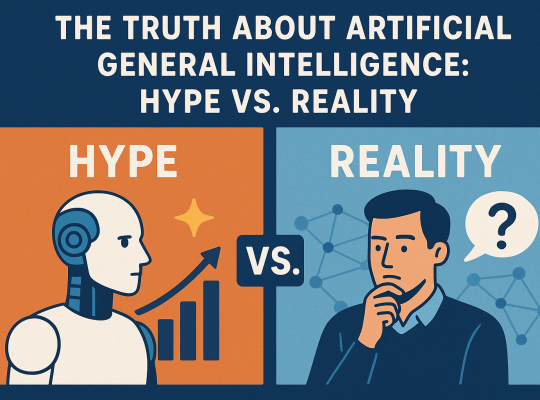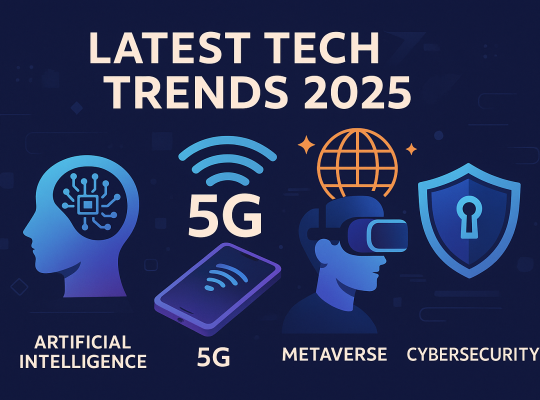Artificial Intelligence (AI) used to be the stuff of science fiction — something reserved for futuristic robots and dystopian thrillers. Fast forward to today, and AI is no longer a far-off fantasy. It’s quietly embedded in the apps you use, the products you buy, the services you enjoy, and the decisions you make every single day.
From voice assistants like Siri and Alexa to personalized shopping recommendations, AI is revolutionizing how we live, work, and interact. This article explores the real-world impact of AI on everyday life, showing how this powerful technology is shaping our routines — often without us even realizing it.
🤖 What is Artificial Intelligence (AI), Really?
At its core, AI refers to machines or software systems that can perform tasks that typically require human intelligence. These include learning, reasoning, problem-solving, understanding language, and recognizing patterns.
There are two main types:
-
Narrow AI: AI designed for specific tasks (e.g., face recognition, voice assistants).
-
General AI: Hypothetical AI that can perform any intellectual task a human can (still a work in progress).
Most of what we use today falls under narrow AI — but its impact is already enormous.
🧠 AI in Your Pocket: Smartphones & Apps
Chances are, you’re reading this on a device that’s powered by AI. Modern smartphones are packed with AI-driven features designed to make your experience smoother and more personalized.
📱 Common Examples:
-
Predictive text and autocorrect in messaging apps
-
Voice assistants like Siri, Google Assistant, and Bixby
-
Facial recognition for unlocking your phone
-
Photo organization based on people, locations, or events
-
Battery optimization that learns your habits
Even the way your phone suggests apps or adjusts screen brightness is thanks to AI.
🛒 AI in Shopping: Personalized Recommendations
Ever wondered how online stores seem to know exactly what you want? That’s AI at work.
🛍️ In eCommerce:
-
Product recommendations based on browsing history
-
Targeted ads that follow you around the internet
-
Chatbots answering your questions in real-time
-
Price comparison tools that help you find the best deals
Whether you’re on Amazon, Jumia, or Konga, AI algorithms analyze your behavior to make the shopping experience feel more personal — and more profitable for sellers.
🎶 AI in Entertainment: Smarter Streaming
From music playlists to movie suggestions, AI plays a major role in shaping your entertainment preferences.
🎧 Examples:
-
Spotify curates “Discover Weekly” using AI to analyze your listening habits.
-
Netflix and YouTube suggest videos and shows you’re most likely to enjoy.
-
Tiktok and Instagram Reels serve content based on your interactions, likes, and watch time.
Even your favorite artists or creators use AI tools to edit, remix, or even create new content.
🚗 AI in Transportation: Smarter and Safer Travel
The automotive industry is experiencing one of the most profound AI transformations.
🛣️ Key Innovations:
-
Self-driving technology used by companies like Tesla, Waymo, and Uber
-
AI-powered GPS navigation (Google Maps, Waze) that adjusts routes based on traffic
-
Driver assistance systems like lane-keeping, collision detection, and adaptive cruise control
-
Predictive maintenance, where AI detects mechanical issues before they become serious
Even ride-hailing apps like Bolt and Uber use AI to match riders with drivers, calculate fares, and optimize routes.
AI in Healthcare: Better Diagnosis and Treatment
AI is saving lives and transforming how healthcare works, especially in diagnostics and treatment planning.
Applications in Healthcare:
-
Early cancer detection using image analysis (radiology, pathology)
-
AI chatbots that provide preliminary health advice (Babylon Health, Ada)
-
Personalized medicine, where treatment is tailored based on your genetic profile
-
Administrative automation to reduce paperwork and improve efficiency
-
Robot-assisted surgery, offering higher precision and faster recovery
In low-resource countries, AI also helps bridge gaps in medical expertise, especially through remote diagnostics.
AI in Communication: From Emails to Translation
AI is deeply embedded in how we write, speak, and communicate — making it faster, easier, and more global.
Tools You Probably Use:
-
Grammarly and Quillbot for smart writing assistance
-
Google Translate and DeepL for real-time language translation
-
Speech-to-text on your phone for dictating messages
-
Smart replies in Gmail and other email apps
These tools are powered by Natural Language Processing (NLP) — a branch of AI focused on understanding and generating human language.
AI in Finance: Smarter Money Management
AI has transformed the financial industry, both behind the scenes and at the consumer level.
Everyday Finance Use Cases:
-
Fraud detection in credit cards and online payments
-
Robo-advisors like Betterment or Cowrywise that suggest investment options
-
Personal finance apps like Mint or PiggyVest that help manage budgets
-
Loan risk assessment using algorithms instead of just credit scores
-
Customer service chatbots at banks and fintech companies
With AI, banks can serve more people efficiently while reducing human error and fraud.
AI in the Home: The Rise of Smart Living
Smart homes are no longer a luxury. Thanks to AI, even affordable homes can be made more efficient and comfortable.
AI-Powered Home Features:
-
Smart speakers (Google Home, Amazon Echo) that control your lights, TV, or music
-
Thermostats that learn your routine and adjust temperatures automatically
-
Security systems that use facial recognition and real-time alerts
-
Smart appliances like refrigerators, washing machines, and even coffee makers
AI doesn’t just add convenience — it also improves energy efficiency and home safety.
AI in Education: Personalizing Learning
AI is helping to close educational gaps by making learning more adaptive and accessible.
Where It Shows:
-
Learning platforms like Coursera, Udemy, or Khan Academy use AI to recommend courses based on skill level.
-
Virtual tutors and chatbots help students understand complex topics.
-
AI-based assessments track student progress and give real-time feedback.
-
Language learning apps like Duolingo adapt lessons based on your performance.
Teachers also benefit through automated grading and tools that identify students who need extra help.
AI in the Workplace: Changing How We Work
From HR to operations, AI is making businesses faster, leaner, and more intelligent.
Business Benefits of AI:
-
Automation of repetitive tasks (e.g., data entry, scheduling)
-
Chatbots and virtual assistants for customer service
-
AI analytics for market research and trend forecasting
-
Resume screening tools that speed up recruitment
-
AI-generated content (like this one!) to support marketing and writing tasks
While there are concerns about job replacement, AI is more likely to augment human work than replace it entirely — at least for now.
Ethical Concerns and the Human Side of AI
As AI becomes more integrated into our lives, so do questions around privacy, bias, and control.
Key Challenges:
-
Data privacy: AI systems rely on data — often very personal data.
-
Algorithmic bias: If AI is trained on biased data, it may reinforce stereotypes or make unfair decisions.
-
Job displacement: Automation can affect low-skill or repetitive jobs, requiring reskilling of workers.
-
Deepfakes and misinformation: AI can generate fake content that’s hard to distinguish from real.
Governments and tech companies are working on ethical AI frameworks, but it’s a work in progress.
Looking Ahead: What the Future Holds
AI is evolving rapidly — and its influence will only grow.
Here are some trends to watch:
-
AI-powered creativity (music, art, writing)
-
Conversational AI for more natural interactions
-
AI in agriculture (smart irrigation, pest detection)
-
AI for climate change predictions and solutions
-
AI in legal and government services
The goal is not just smarter systems — but a smarter, fairer world.
Final Thoughts: Embracing AI Responsibly
AI is no longer a “future tech” — it’s the present. From how we talk and shop to how we learn and heal, artificial intelligence is transforming daily life in powerful and mostly positive ways.
But with great power comes great responsibility.
The key to benefiting from AI lies in understanding it, using it wisely, and staying informed. Whether you’re a student, a business owner, a parent, or just a curious digital citizen — learning about AI will help you thrive in a world where machines are increasingly intelligent.
AI is here to stay — and it’s already shaping your tomorrow.









